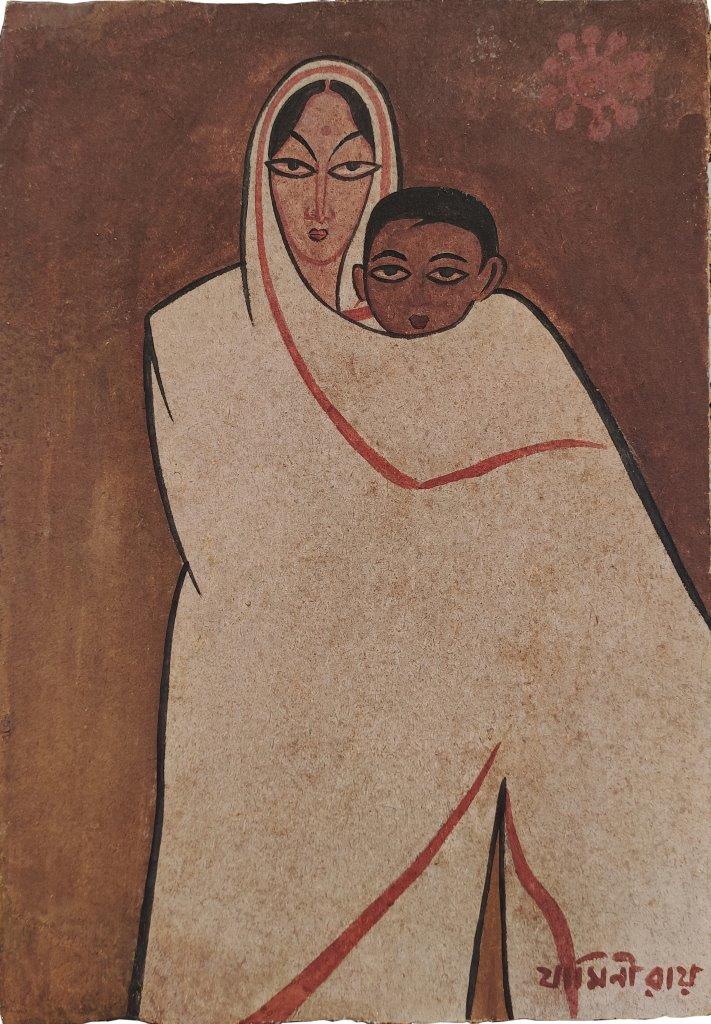Date of Birth: 1887 - 1972
Medium: Watercolour and gouache on cardboard
Size: 12 x 8.5 inches, 30.5 x 21.5 cms
Signed by: Signed in Bangla ‘Jamini Roy’ on lower right
Provenance: Collection of a reputed art gallery, New Delhi.
Estimate: ₹ 6,00,000 - ₹ 8,00,000
Jamini Roy, born in 1887 in Beliatore, Bankura district of West Bengal, is often regarded as the first modernist master of Indian Art. He reinvented the trope of western modernism in an Indian context and synthesized it with Indian folk- art forms. He joined the Government School of Art, Kolkata in 1903. Jamini Roy started off his career as a portrait artist and mostly worked for commission. In 1925, his first encounter with Kalighat painting displayed outside the Kalighat Temple in Kolkata inspired him a lot. Jamini, a man with a vision, wanted to simplify and portray life of common people, to make his art accessible to all and to bring back the glory of Indian Folk Art. From this moment his paintings started to reflect the Kalighat school of Art. His works were largely bought by European Communities. In the following years, he had one man exhibition in both India and abroad including London and New York. In the early 1920s his works were influenced by the Bengal School of Art. He began his career by painting in the post impressionistic genre of landscapes and portraits. Later, his works portrayed daily life of rural Bengal and were inspired by themes from Hindu epics like Ramayana and tales of Radha-Krishna. Jamini Roy’s distinct style indeed, became a strong socio-cultural and political statement as it became symbolic of a culture trying to find inspiration in its own roots and rich artistic tradition rather than looking towards the west for inspiration. His subjects are taken from the people around him; the village folk in particular such as the Bauls, Bauris, Santhals or Mallas appear very often. He attempts to shed the non- essentials in his search for certain universal elements and reaches a stage where his figures, shorn of frills and decorations, attain a frieze- like architectural quality


 Authenticity
Guarantee
Authenticity
Guarantee Bid in auction or buy now
Bid in auction or buy now